Introduction |
Formats |
Printings |
Dies |
Paper |
Straight Edges |
Coils |
Fakes |
Forgeries |
Terminology |
Varieties |
Cancellations |
Rates |
Bibliography
Admirals with Straight Edges
From Post Office Sheets or Booklet Panes?
1. Straight-edge Stamps from Panes of 100
The plates for the Admiral sheet stamps consisted of four panes of 100 except for the following which had just two panes:
- Plates 43 and 44 of the 1¢ green
- Plates 1 and 2 of the 5¢ blue, 7¢ bistre, 10¢ plum, and 50¢ black
- Plate 1 of the 20¢ olive green
From the time the Admiral stamps were first issued up to mid-January 1914, the panes were separated by gutters that served as margins when the sheet was guillotined. Thus, the panes had margins on all four sides.
In mid-January 1914, the plate layout was modified. The gutters between panes were eliminated. As a result, panes from sheets of 400 stamps had margins on two adjoining sides and straight-edged stamps on the other two sides.
The layout of plate 2 of the 50¢ is unique. The other plates of 200 listed above were produced before gutters were eliminated. However, plate 2 of the 50¢ was produced in December 1917, so there was no gutter between the two panes on the plate. Each pane had one side with a straight edge.
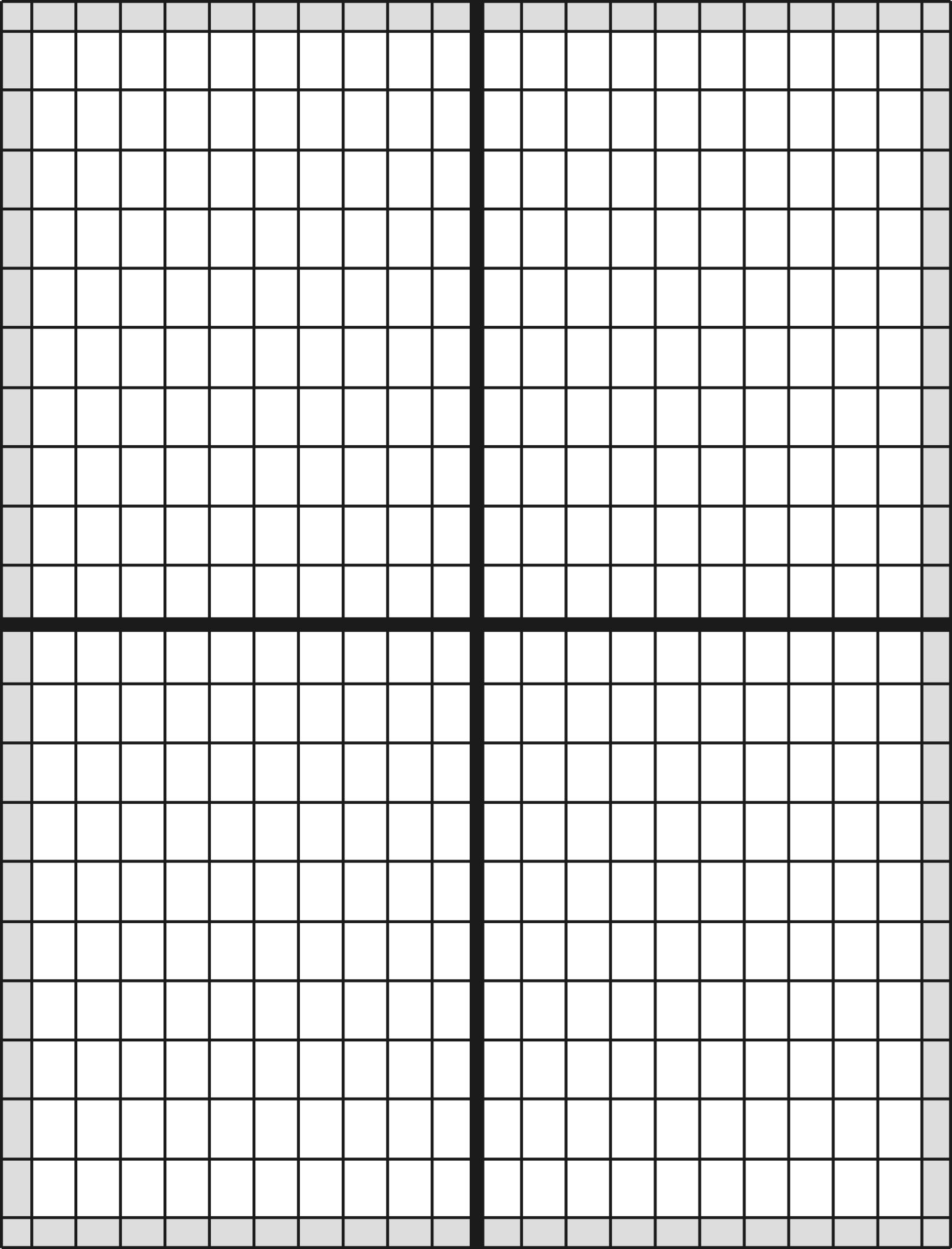
The diagram above shows the layout of a plate of 400 stamps with no gutter between panes. The sheet of 400 stamps was guillotined into panes of 100 along the dark lines bisecting the grid vertically and horizontally. All stamps along the dark lines have a straight edge on one side except for the corner stamps which have a straight edge on two adjoining sides. The grey areas around the edges of the diagram represent the selvedge on the other two sides of a pane of 100 stamps.
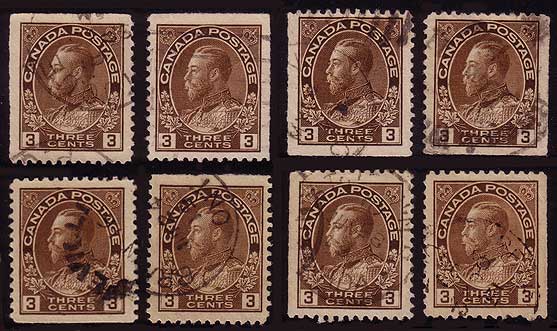
Pictured above are the eight different straight edge stamps that come from panes of 100. A set like this can be assembled for each denomination of the Admirals issued in this format.
2. Straight-edge Stamps from Booklet Panes
The following Admiral booklet panes were produced:
| Stamp | Pane of 4 | Pane of 6 |
| 1¢ green | YES | |
| 1¢ yellow | YES | YES |
| 2¢ carmine | YES | |
| 2¢ green | YES | YES |
| 3¢ brown | YES | |
| 3¢ carmine | YES |
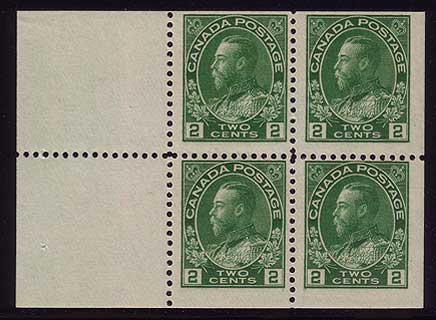
Single stamps from booklet panes have a straight edge on one or two sides. The booklet pane of four illustrated above shows the four different straight-edge varieties that come from booklet panes. These four varieties are also found on panes of 100.
3. How to Identify the Source of a Straight-edge Stamp
Single stamps from some booklet panes are much scarcer than regular straight-edge stamps and their catalogue value reflects that scarcity. There is a tendency for both stamp dealers and collectors to label any straight-edge stamp as coming from a booklet pane. This is obviously incorrect since similar straight-edge varieties exist on sheet stamps and sheet stamps are far more common than booklet stamps.
So the question arises as to whether straight-edge stamps can be positively identified as coming from either a pane of 100 or a booklet pane.
The answer is straightforward if the stamp has a cancellation prior to mid-January 1914. Since this is when gutters were eliminated on sheet stamps, stamps with earlier cancellations must come from booklet panes.
Otherwise, the question has no easy answer. If the collector is willing use Marler's book, The Admiral Issue of Canada, to go through his "types" one by one, most booklet pane singles can probably be identified. Most collectors, though, do not have the time or the patience to do this.
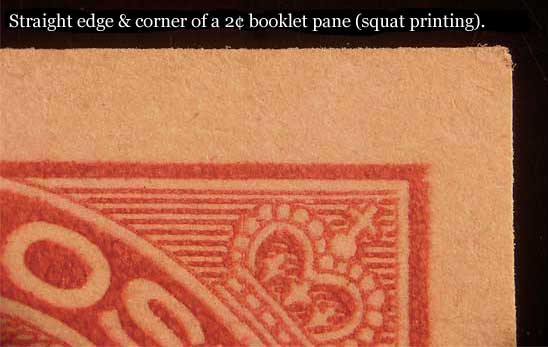
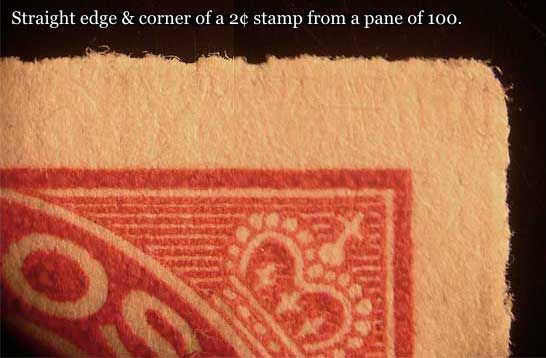
As can be seen from the illustrations above, the straight edges of a booklet pane stamp tend to be very smooth clean cuts. Although a straight edge from a pane of 100 may look straight to the naked eye, under magnification it tends to be fairly rough. This way of differentiating the sources of straight-edge stamps is not infallible, but it works most of the time. The important word to remember here is "tend".
Remember also that "squat printings" of the 1¢ green and 2¢ carmine Admirals on horizontally wove paper are from booklet panes. For more information on "squat" printings, see "Paper Varieties".
4. Tips for Specific Booklet Pane Singles
It is fairly easy to distinguish stamps printed by the wet method from those printed by the dry method.
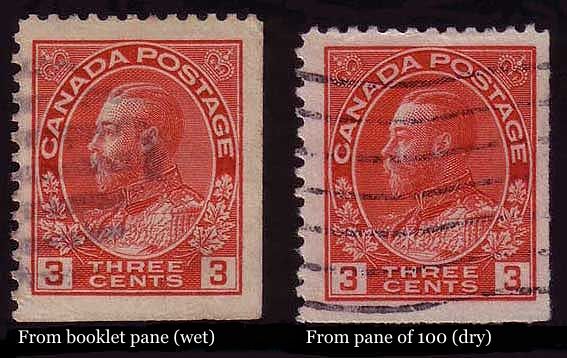
Booklet pane singles of the 3¢ carmine Admiral are quite easy to identify. The booklet panes were printed by the wet method, and the panes of 100 were printed by the dry method. Therefore all stamps from the 3¢ carmine booklet pane are narrow in comparison to stamps from the pane of 100.
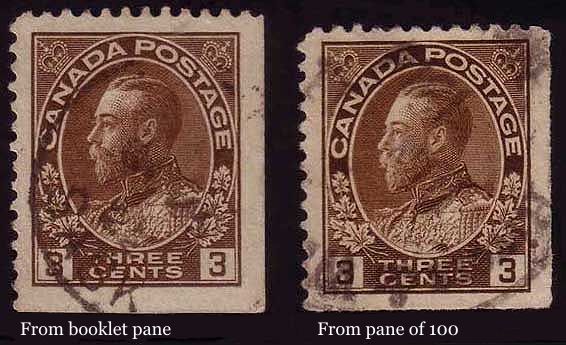
In contrast, single stamps from the 3¢ brown booklet pane are fairly hard to identify. Marler classifies them as Type 18, which also is found on many sheet stamps. The best way is to look at the smoothness of the straight edges. Even in the illustration above, the difference can be seen. Also, stamps from booklet panes tend to be more a reddish brown rather than a yellow brown. The colour differences may or may not be seen in the illustration above because computer monitors vary quite a bit.
Introduction |
Formats |
Printings |
Dies |
Paper |
Straight Edges |
Coils |
Fakes |
Forgeries |
Terminology |
Varieties |
Cancellations |
Rates |
Bibliography